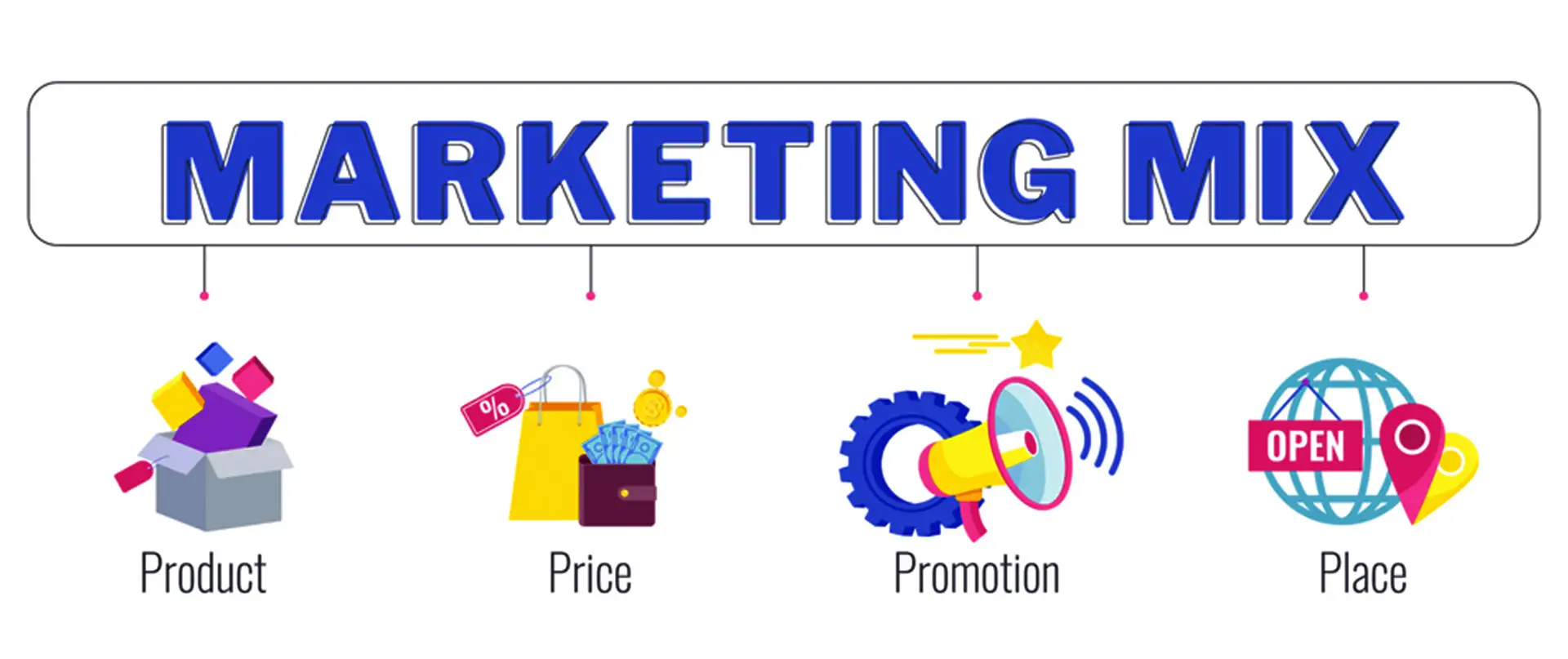
What are 4Ps of marketing mix
What are the four P's of the Marketing Mix?
The four Ps are often referred to as the marketing mix, They are key considerations that must be carefully considered and implemented wisely in order to successfully market a product or service. these are the product, price, place, and promotion.
It includes a range of factors considered when marketing a product, including what consumers want, how the product or service meets or fails to meet those desires, how the product or service is viewed in the world, how it differs from the competition, and how the company interacts with producing it with its clients.
From the beginning of the 4 Ps in the 1950s, more Ps have been identified, and this includes people, processes, and physical evidence.
Understanding 4 Ps of Marketing
Since the beginning of Neil Borden's article, professor of advertising at Harvard University, in 1964, on the idea of the marketing mix - and the concepts that would later come to be known primarily as the Four Ps - in the 1950s. Ways companies can use advertising tactics to engage consumers.
Decades later, the concepts promoted by Borden are still used by companies to advertise their goods and services.
Borden's ideas were developed and refined over a number of years by other major players in the industry. E. Jerome McCarthy, professor of marketing at Michigan State University, refined the concepts in Borden's book and called them The Four Points of Marketing. McCarthy co-wrote the book Basic Marketing: A Managerial Approach which further popularized the idea.
Since the introduction of this concept, it has helped companies break through the physical barriers that can hinder the widespread adoption of products. Today, the Internet has helped companies overcome some of these barriers.
People, Process, Positioning, and Physical Evidence are extensions of the original Four Ps and are relevant to current trends in marketing.
These Are the 4 Ps of Marketing.
1. Product
Creating a marketing campaign starts with an understanding of the product itself. Who needs it, and why? What does it do that no competitor's product can do? Perhaps it's a new thing altogether and is so compelling in its design or function that consumers will have to have it when they see it.
The job of the marketer is to define the product and its qualities and introduce it to the consumer.
Defining the product also is key to its distribution. Marketers need to understand the life cycle of a product and business executives need to have a plan for dealing with products at every stage of the life cycle.
The type of product also dictates in part how much it will cost, where it should be placed, and how it should be promoted.
Many of the most successful products have been the first in their category. For example, Apple was the first to create a touchscreen smartphone that could play music, browse the Internet, and make phone calls. Apple reported total sales of the iPhone to be $71.6 billion in Q1 2022.3 In 2021; Apple hit the milestone of 2 billion iPhones sold.
2. Price
Price is the amount that consumers will be willing to pay for a product. Marketers must link the price to the product's real and perceived value, while also considering supply costs, seasonal discounts, competitors' prices, and retail markup.
In some cases, business decision-makers may raise the price of a product to give it the appearance of luxury or exclusivity. Or, they may lower the price so more consumers will try it.
Marketers also need to determine when and if discounting is appropriate. A discount can draw in more customers, but it can also give the impression that the product is less desirable than it was.
3. Place
Place is the consideration of where the product should be available, in brick-and-mortar stores and online, and how it will be displayed.
The decision is key: The makers of a luxury cosmetic product would want to be displayed in Cairo and Giza, not in Upper Egypt. The goal of business executives is always to get their products in front of the consumers who are the most likely to buy them.
That means placing a product only in certain stores and getting it displayed to the best advantage.
The term placement also refers to advertising the product in the right media to get the attention of consumers.
4. Promotion
The goal of promotion is to communicate to consumers that they need this product and that it is priced appropriately. Promotion encompasses advertising, public relations, and the overall media strategy for introducing a product.
Marketers tend to tie promotion and placement elements together to reach their core audiences. For example, In the digital age, the "place" and "promotion" factors are as much online as offline. Specifically, where a product appears on a company's web page or social media " Facebook, Instagram & Twitter", as well as which types of search functions will trigger targeted ads for the product.
How Do You Use the 4 Ps of Marketing?
The model of the 4Ps must be used when you are planning a new product launch, evaluating an existing product, or trying to optimize the sales of an existing product.
A careful analysis of these four factors—product, price, place, and promotion—helps a marketing professional devise a strategy that successfully introduces or reintroduces a product to the public.
Conclusion
The four Ps of marketing—product, price, place, promotion—are marketing mix. Considering all of these elements is one way to approach a holistic marketing strategy. These are the key elements involved in planning and marketing a product or service, and they interact significantly with each other.
Related posts:
Unlock Marketing Success With Data-Driven Insights And Strategic Planning
Marketing Mix From 4Ps: 8Ps And The Difference Between Them
Benefits Of SOSTAC Model








